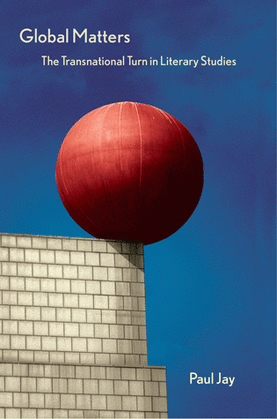
TRANSFOPRESS
By Diana Cooper-Richet
The press written in languages other than the national language(s) is an important historical, but also contemporary, international phenomenon, that can easily be illustrated by the following examples. In London, and later in Saint-Hélier (Jersey), between 1853 and 1856, Charles Ribeyrolles’s L’Homme, Journal de la démocratie universelle was put on the market for the French exiles of the 2 December 1851 Coup d’Etat. At the very same time, in Paris, the Anglo-Italian publishers, Galignani, were selling their English language daily, Galignani’s Messenger (1814-1886). Among communities of immigrants, periodicals in foreign languages were also being issued, such as La Estella de Chile (1891) in Paris. Other publications, were aiming at being the vectors of transatlantic communication. El Correo de ultramar (1842-1886), also published in Paris for the Hispano-American market, is one such example. Nowadays, similar papers are available in many countries. The Buenos Aires herald, A World of Information in a few words, founded in 1876, is on sale in the newsstands in Argentine. For the last few years, in Burma (Myanmar), travelers and residents have been able to read the Myanmar Times, Myanmar’s first international weekly. In China, they can refer to China Daily, in Moscow they buy Moscow News and if they want to push as far as Oulan Bator they will find The Mongol Messenger.
Despite their varying circulation, the quality and the durability of a certain number of them, most of these periodicals have rarely attracted the attention of the academic community, be it in France, Britain, the United States, Canada, or Australia, which are all countries of immigration. The only research conducted, on a few of these publications, has tended to focus on groups of political exiles. But it seems clear that these papers deserve to be examined for themselves, as periodicals belonging to the histories of the national press, providing information on the circulation of ideas, but also on that of scientific and technical knowledge. Yet, because of the “strangeness” of the language in which they are written, they have been almost completely neglected by the “official” histories of the book, the press and the libraries, which have essentially aimed at building national identities. A new, useful approach would be to consider these periodicals in a transnational framework. It could be stimulating, and no doubt more fruitful, for instance, to enable Latin-American and French researchers to work together on the 80 or more newspapers in Spanish, or on the reviews in Portuguese, published in Paris during the XIXth Century, in order to understand the context and the conditions of their publication as well as those of their reception and their dissemination.
Most of these periodicals have been totally forgotten in the world history of the press. The state of research on this extremely important corpus – more than 500 periodicals in foreign languages published in France during the XIXth Century, currently registered- is both embryonic and fragmented. The periodicals in foreign languages must be thoroughly catalogued, and research must be launched, considering that, in most cases, only their titles are known. When this initial stage has been reached and an annotated bibliography has been drafted, a first scientific conference could be organized in order to compare the results obtained by the different members of the network, more particularly concerning the different types of publications, the people who initiated them, the publishing houses which marketed them, the languages in which they were written, their networks, their longevity, their chronology, their content, their readers, their area of dissemination…. A publication could then be planned. It is, indeed, essential to cast a fresh look on these very specific periodicals. Studying them will help deepen the knowledge available on the circulation of persons and ideas, clarify the complex cultural transfers which they induce, enhance the understanding of the culturally mixed identities which they give birth to, thereby enabling the conception of a global history of the press in foreign language and its circulation in the world.
The colleagues, researchers and teachers, the students, of all fields –historians of the book, of the press or of immigration, specialists of a specific cultural area: Anglicists, Germanists, Hispanists….. – who would like to join this network are requested to contact Diana Cooper-Richet in charge of TRANSFOPRESS in cooperation with Michel Rapoport, researchers in the Centre d’Histoire Culturelle des Sociétés Contemporaine (CHCSC) of the University de Versailles Saint-Quentin-en-Yvelines (UVSQ), France.


 Le compte-rendu de la JE du 12 décembre 2013 à l’Institut des Amériques et les documents annexes sont en ligne
Le compte-rendu de la JE du 12 décembre 2013 à l’Institut des Amériques et les documents annexes sont en ligne  Paul Jay. Global Matters: The Transnational Turn in Literary Studies. Ithaca: Cornell UP, 2010. 231pp., Print.
Paul Jay. Global Matters: The Transnational Turn in Literary Studies. Ithaca: Cornell UP, 2010. 231pp., Print.